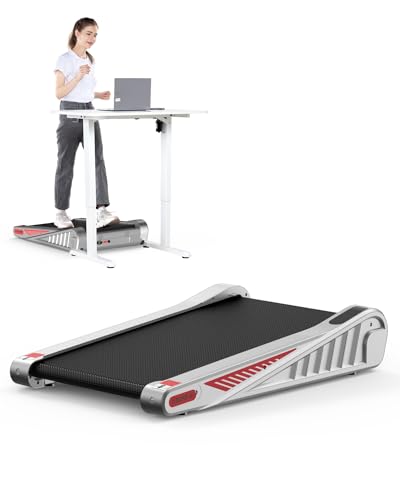14 Companies Doing An Excellent Job At Walking Pad Non Electric

Exploring the Benefits of Walking Pads: The Non-Electric Choice
In the era of modern fitness solutions, where innovation reigns supreme and elegance is typically associated with electrical devices, a brand-new trend is emerging in useful workout: the non-electric walking pad. These basic yet efficient pieces of devices are capturing the interest of physical fitness lovers and casual walkers alike.
In this thorough guide, we will explore what walking pads are, their benefits, contrasts with standard treadmills, and offer answers to regularly asked concerns.
What is a Walking Pad?
A walking pad is a compact workout platform created mostly for walking, jogging, or light running. Unlike conventional treadmills which rely on electrical power, non-electric walking pads operate on a manual system. Users move themselves forward by walking or running, harnessing their own body weight.
Key Features of Non-Electric Walking Pads:
- Compact Design: Most walking pads are lightweight and foldable, making them simple to store and transportation.
- User Controlled: The speed and intensity of the exercise depend upon the user's own effort.
- No Plug Required: Perfect for energy-conscious individuals, these pads need no power usage.
- Quiet Operation: A quieter option to electric treadmills, making them suitable for apartments or shared spaces.
Benefits of Using Non-Electric Walking Pads
Utilizing a non-electric walking pad provides a variety of benefits. Below are some of the prominent advantages:
| Benefit | Description |
|---|---|
| Cost-efficient | Non-electric models are generally more budget-friendly than their electric equivalents, making them available to a wider audience. |
| Improved Flexibility | Users can stroll or jog at their own pace, which is particularly beneficial for newbies or those recuperating from injuries. |
| Space-Saving Design | Due to their compact size, walking pads fit comfortably in smaller sized areas, making them perfect for home or office use. |
| Low Maintenance | With no electrical elements, these pads need minimal maintenance and are less most likely to break down. |
| Eco-friendly | No electricity indicates no environmental effect from energy usage, making them a fantastic choice for eco-conscious consumers. |
Comparing Non-Electric Walking Pads to Traditional Treadmills
| Function | Non-Electric Walking Pad | Traditional Treadmill |
|---|---|---|
| Source of power | Manual (user-powered) | Electric (plugged in) |
| Cost | Lower upfront expense | Higher preliminary investment |
| Size | Compact and portable | Larger, frequently stationary |
| Sound Level | Extremely quiet | Can be noisy, depending upon motor and use |
| Customization | Minimal user settings | Extensive settings (speed, incline, programs) |
| Physical Engagement | Higher intensity and effort needed | Simpler to utilize however may encourage less engagement |
How to Use a Non-Electric Walking Pad
Using a non-electric walking pad is simple. Here's a basic detailed guide:
- Set Up: Place the walking pad on a flat, steady surface area.
- Adjust the Pad: Ensure that it is at a comfortable position for usage-- most pads have adjustable angles to tailor the walking experience.
- Warm-Up: Before utilizing the pad, perform a quick warm-up routine, which can consist of gentle extending.
- Start Walking: Step onto the pad and begin walking at a moderate rate. As your speed boosts, you will observe the pad moving.
- Monitor Your Intensity: Pay attention to your heart rate and how you feel. Change your speed according to your physical fitness level.
- Cool off: Gradually decrease your speed before stepping off the pad, followed by cooldown stretches.
Best Practices for Using Walking Pads
To make the most of the advantages of non-electric walking pads, think about the following suggestions:
- Incorporate Variety: Alternate between walking and running for a full-body workout.
- Engage Your Core: Maintain good posture by keeping your core engaged while using the pad.
- Hydration: Remember to hydrate before and after your workout.
- Consistency: Aim to use the walking pad regularly. Start with 15-20 minutes and gradually increase the duration.
Frequently Asked Questions
1. How reliable are non-electric walking pads for weight loss?
Non-electric walking pads can be effective for weight loss when utilized regularly in conjunction with a healthy diet plan. Since Manual Walking Pad Uk need more effort, they can make it possible for higher caloric expenditure during exercises.
2. What is the weight capability of a lot of walking pads?
Most non-electric walking pads can support people as much as 250-300 pounds, depending upon the design. Always inspect the maker's specs for accurate info.
3. Exist any suggested brands for walking pads?
Some popular brand names include InMovement, ProForm (manual models), and ECHANFIT, each offering a variety of functions customized to diverse user choices.
4. Can non-electric walking pads be utilized outdoors?
These walking pads are typically created for indoor usage. Utilizing them outdoors might expose them to climate condition that might impact their resilience.
5. How do I store a walking pad?
Many non-electric walking pads are foldable. Simply fold them up and save them in a closet, under a bed, or any convenient area.
Non-electric walking pads provide a special and effective aerobic workout choice that highlights simpleness and ease of access. By allowing users to develop their physical fitness regime without the restrictions of power cables and complicated interfaces, these pads empower individuals across different physical fitness levels.
For anyone searching for an affordable, space-saving, and efficient option to conventional exercise equipment, checking out the world of non-electric walking pads may be the perfect next step in their physical fitness journey. By picking to invest in among these versatile tools, people can cultivate healthier practices while taking pleasure in the empowering experience of motion on their own terms.

